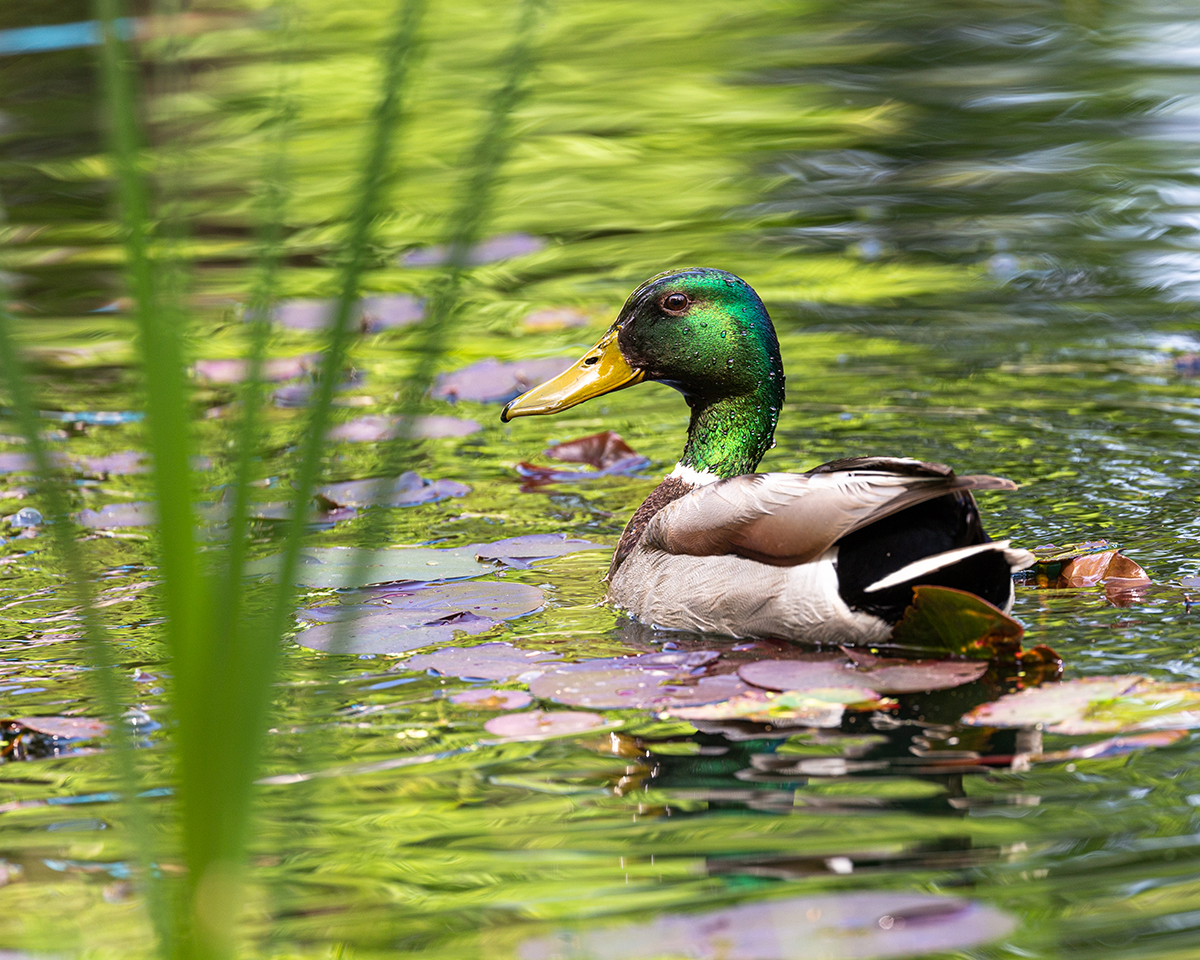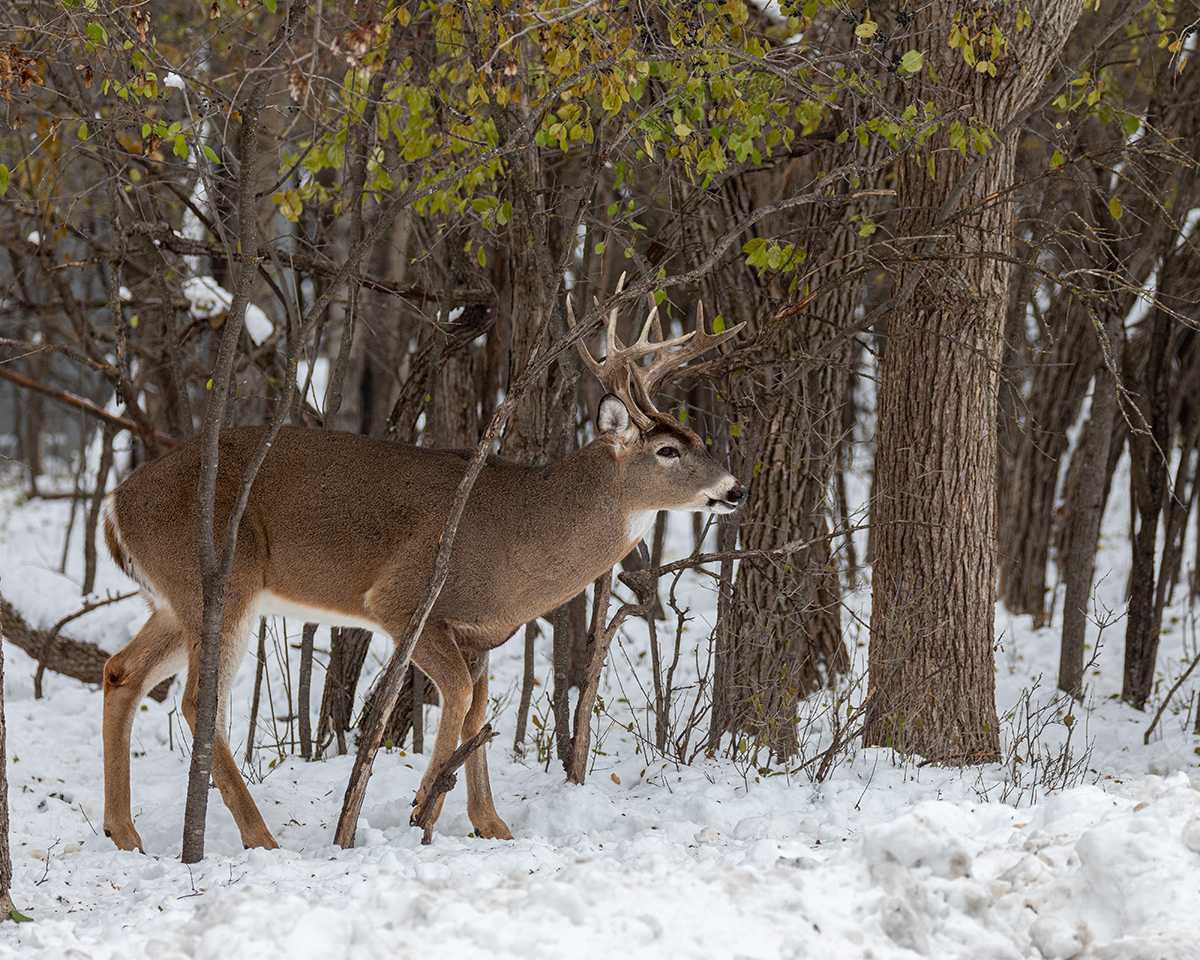Wildlife at the Park
Assiniboine Park is home to a wide variety of wildlife including waterfowl like ducks and geese, songbirds, deer, squirrels, rabbits, and more! We encourage visitors to enjoy watching wildlife from a safe distance.
Special Alert: Avian Influenza
The Assiniboine Park Conservancy is monitoring the confirmed presence of highly pathogenic avian influenza in Canada, including Manitoba. This is a serious viral infection that could affect wild birds at the Park and those in our care at the Zoo.
At Assiniboine Park
Do not feed birds or other wildlife. This can encourage large gatherings, which may increase the risk of spreading avian influenza in the wild population.
At Assiniboine Park Zoo
To prevent exposure to wild birds, some of the birds in our care will be kept indoors or moved to more protected habitats.
Transmission to humans is very rare but has occurred. According to the Canadian Food Inspection Agency (CFIA), there have been no human cases of avian influenza resulting from exposure to wild birds in North America.
For more information:
Canadian Food Inspection Agency (CFIA)
Manitoba Public Health – Avian Influenza
Please Do Not Feed Wildlife at the Park
Although well-intended, feeding wildlife can actually endanger their health and survival. Under the Wildlife Act (Section 6.1 of the Wildlife Protection Regulation), any attempt to feed or lure wildlife that creates or may create a risk to their health and safety, the safety of people, or result in property damage is prohibited. Violators can be ordered to stop and may face additional enforcement action including charges and possible fines.
Feeding wildlife can lead to the following problems:
Overpopulation
Populations of wildlife found in the Park are currently health and supplemental feeding may increase them over and above what the environment could naturally support.
- This presents a problem because more food is needed to sustain the larger population and if the food is removed starvation can occur. It is better to have naturally feeding smaller populations that are more stable over time.
- When populations are high and animals are concentrated it is the perfect setting for the spread of diseases. Higher density facilitates the transmission of diseases from one animals to another. When concentrated in a small area, animal waste and excess food waste can build up. This material can harbour disease longer than in natural areas where densities are lower.
- Overgrazing and trampling of vegetation can occur with high concentrations of animals. This may reduce habitat for other species and reduce opportunities for visitors to enjoy the grounds.
Behavioural Changes
Feeding animals trains them to associate humans with easy food. This is dangerous for both the animals and for Park visitors.
- When animals become conditioned to associate food with humans they can become aggressive and scare or harm visitors. They may also move to dangerous areas like roadways and can be injured or killed.
- When waterfowl and other animals are fed, they are less likely to migrate at all or at the right time of year. This can lead to resident populations of animals that would normally migrate.
Public Health
Fecal matter from waterfowl can contaminate water for that it presents a health risk to people and pets.
- The natural process in water bodies can break down only a certain amount of fecal matter from waterfowl. As the population rises, the water can become contaminated with too many nutrients leading to algae blooms and fish die-offs.
- Public recreation opportunities are reduced when lawns and pathways are contaminated with fecal matter. Fecal matter on Park paths reduces the friction coefficient and can lead to slips and falls.



